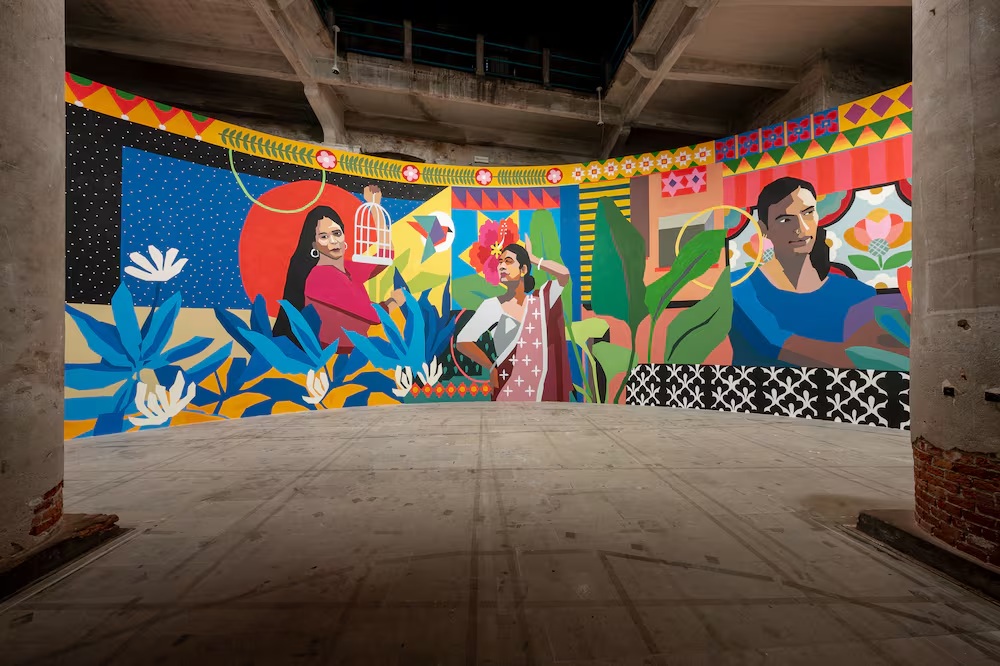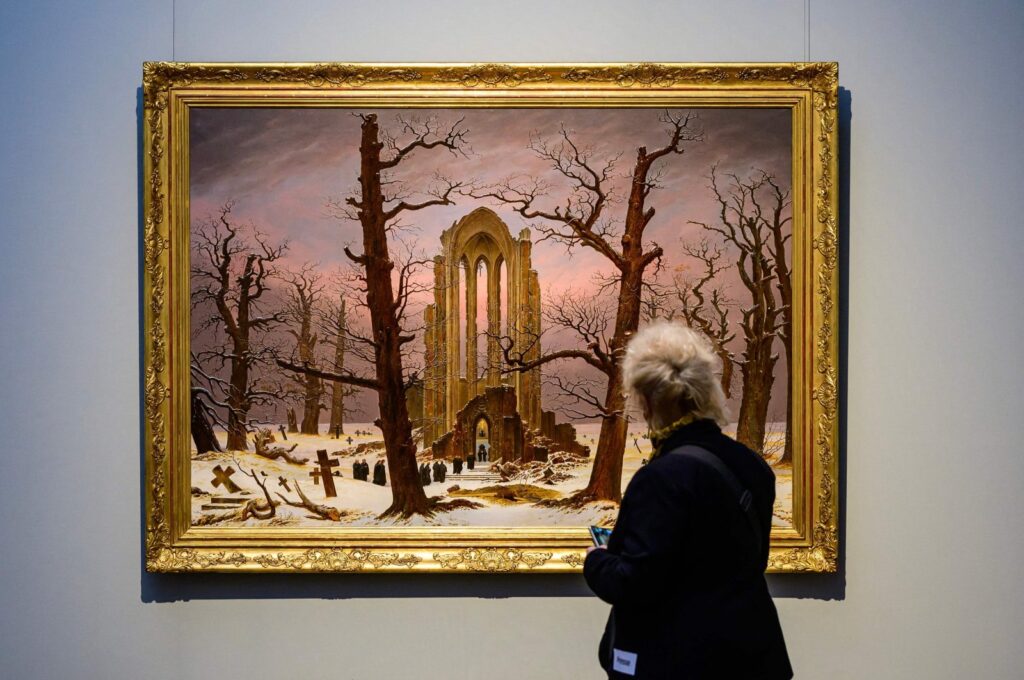
Naomi Polonsky
LONDON : Halfway through the exhibition Reframed: The Woman in the Window at Dulwich Picture Gallery is Isa Genzken’s “Fenster” (1990), a large, rough-hewn concrete frame placed on a metal stand. The wall text reveals that Genzken is the first female artist represented in the exhibition — by this point we are 29 artworks in — and that she “herself may be understood as the woman at this window.” So may the viewer, who is also suddenly thrust into the center of the frame, or window. It’s a brilliant curatorial sleight of hand, characteristic of this elegant exhibition, which explores the trope of the “woman in the window” through 3,000 years of global art history.
The exhibition is both thematic and (broadly) chronological. The first gallery, Origins and Adaptations, is a whistle-stop tour highlighting various examples of the trope, from an ivory panel created in 900–700 BCE in Nimrud (modern-day Iraq) to a portrait of an “influencer” by Cameroonian artist Ajarb Bernard Ategwa, painted last year. The room also includes Rembrandt’s iconic “Girl at a Window” (1645) from Dulwich Picture Gallery’s own collection, a work that is both enigmatic and unsettling. The unknown sitter, whom the artist painted from life, has been described over the centuries as his bride, lover, or “courtesan.” Yet, although she has a woman’s body, her big-eyed, rosy-cheeked face is clearly that of a child.

This opening gallery shows that undertones of sexual availability have been near constant in depictions of women in windows, whether on bawdy Ancient Greek pots or in delicate Dutch Golden Age paintings, and this theme recurs throughout the exhibition’s subsequent sections. In the final room, for example, there are photographs of Marina Abramović’s performance “Role Exchange” (1975) during which the artist swapped places with Suze, a sex worker in Amsterdam’s Red Light District. Suze stood in the window of an art gallery, with Abramović taking her spot in the window of a brothel. While this work intelligently links a modern-day sexualized woman in a window with the art historical trope, the exhibition itself never fully probes this enduring association.
Another reference to art history comes in Tom Hunter’s “Woman Reading a Possession Order”(1997) in which the artist re-stages Vermeer’s “Girl Reading a Letter at an Open Window” (1657–59). Vermeer’s luxurious Dutch interior becomes a squat in East London, the bowl of fruit becomes a baby, and the love letter becomes an eviction notice. While the magic and beauty of the composition remain, one woman’s hopeful moment is transformed into a hopeless scenario for another. The work brings up fascinating questions about home and womanhood. For example, who owns the window? In Vermeer’s painting, it’s a marker of domestic confinement, perhaps even imprisonment, while in Hunter’s version it’s the sign of a precarious but independent home. How do the scenes relate to women’s sexuality? The excitement of a budding romance in Vermeer’s work becomes the responsibility of motherhood in Hunter’s.

The image of a woman and baby in a window is repeated in portrayals of the Virgin and Child in the exhibition’s next section, the Sacred Woman in a Window, which includes a stunning stone relief by the Italian sculptor Antonio Rizzo. Originally displayed in a domestic space and hung at window height, Rizzo’s protruding stone frame would have taken on the appearance of a window itself — a compelling precursor to Genzken’s conceptual sculpture created over five centuries later, and one of many intriguing echoes in this show.
But just as interesting as the connections between works are the divergences. Opposite the Madonnas, under the theme Models and Muses, are two very different portrayals of women in windows, by Edgar Degas and Walter Sickert. In Degas’s composition, conjured from a palette of browns and grays, the woman sits with her back turned to an overcast Parisian sky, hands placed solemnly on her knees. The tranquility of the painting is undermined by the story behind its creation. The model, a starving sex worker, was paid with a hunk of meat, which she allegedly “fell upon, so hungry was she, and devoured raw.” Degas relayed this incident to his friend Sickert, who bought the painting and created his own, characteristically seedy, version of it. His bare-breasted sitter (most likely also a sex worker) stares out of the window, while perched on a bed.
The final two galleries feature works in which female (and some male) artists subvert, adapt, and abstract the trope of the woman in the window. Particular highlights include Kudzanai-Violet Hwami’s tender portrait “Tsitsi” (2022), Cindy Sherman’s playfully seductive “Untitled Film Still #15” (1978), and Rachel Whiteread’s ethereal sculpture “Untitled (For WHP)” (2015). In the exhibition’s moving epilogue — the Pandemic Window — two images by amateur photographers show grandmothers who are separated from their grandchildren by windowpanes, but touch and kiss them through the glass.
Thematic exhibitions can be a risky endeavor. If the theme is too narrow it becomes repetitive; if too broad it becomes meaningless. This theme, however, is perfectly judged. The show is packed with stellar works and powerful ideas, without being didactic or prescriptive. It explores the acts of looking and being looked at, framing, and art making. The only aspect that can feel lacking is the why of the exhibition. Why have artists from across the world and through the centuries returned time and again to the image of a woman at a window? Why is the trope specific to women and why does it so often connote sexuality? These questions could have been teased out a little more to draw together the different sections and explore the overarching issues. Yet, after seeing this impressive survey I’ll never look at women in windows in the same way again — in art or life.

Courtesy: hyperallergic
The post Why do artists keep painting “the women in the window”? appeared first on The Frontier Post.








